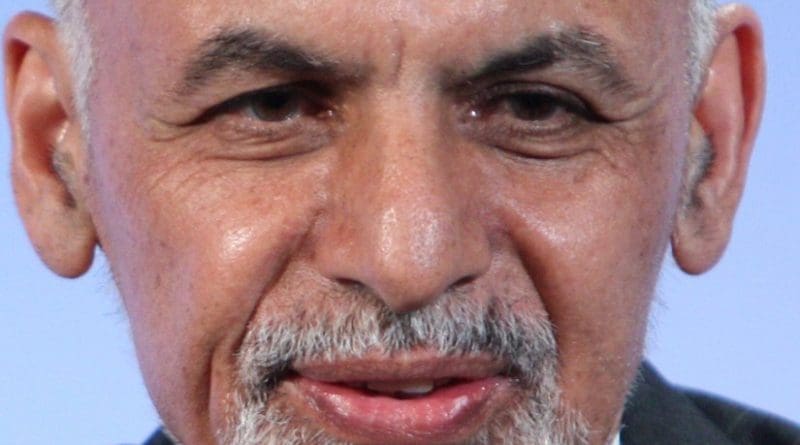India, Afghanistan And Heart Of Asia: Reading Between Lines – Analysis
By IPCS
By Sarral Sharma*
On 4 December 2016, the sixth ministerial conference of the Heart of Asia – Istanbul Process (HoA-IP) on Afghanistan concluded in Amritsar, India. The Afghan President Ashraf Ghani and Indian Prime Minister Narendra Modi voiced their concern over common issues such as terrorism and trade connectivity in the region in a bid to corner Pakistan. In their respective speeches, they made direct and indirect references to Pakistan’s reluctance to effectively counter terrorism in the region.
For instance, Modi appealed to the participating countries to take “resolute action” against those “who support, shelter, train and finance” terrorism in Afghanistan. Although, his less aggressive posturing and no direct mention of Pakistan may have signalled a slight shift in India’s offensive policy against its western neighbour. Domestically, it was perceived as a missed opportunity to publicly denounce Pakistan at a multilateral forum.
In comparison, Ghani was far more blunt and sarcastic in denouncing Pakistan. Ghani has seemingly lost faith in Pakistan’s efforts to normalise the situation in Afghanistan. The failed peace negotiations with the Taliban, the killing of Mullah Mansour in Balochistan, and regular terror attacks are a constant reminder of Pakistan’s broken promises that have lead to a deterioration of bilateral relations. Mocking Pakistan’s financial assistance of $500 million to Afghanistan, Ghani derisively advised Pakistani Prime Minister’s Adviser on Foreign Affairs Sartaz Aziz to spend it on stopping “cross-border terrorism” instead.
In the light of Ghani’s failed attempts to normalise ties with Pakistan, Afghanistan has continued to tilt towards India. Modi has also acceded to Kabul’s request to provide both financial and military assistance. India recently delivered the fourth Mi-25 helicopter to Afghanistan and further pledged $1 billion aid for future development assistance in September. On the sidelines of the conference, Modi and Ghani agreed to establish a “cargo air corridor”, bypassing Pakistan, which could potentially enhance bilateral trade between the two countries. New Delhi is keen to actively pursue the shortest land route access to Afghanistan. However, Pakistan has consistently refused to allow Indian goods to pass through its territory to Afghanistan. Hosting the conference in Amritsar (close to Attari-Wagah crossing) could be a signal to Pakistan regarding the transit of Indian goods to Afghanistan.
Ghani and Modi’s overlapping of objectives were based on Afghanistan and India’s own assessment of their national interests vis-a-vis Pakistan. Hence, the overall objective was not really to ‘isolate’ Pakistan, as was appropriated by the media. Presumably, it would have been a difficult objective to achieve as both leaders understand Pakistan’s potential role in Afghanistan’s future stability. Aziz’s presence also indicates Islamabad’s willingness to continue engagement on Afghanistan. However, it should not be seen as Pakistan’s attempt to genuinely reach a resolution on the issue. Rather, Pakistan’s absence from the conference may have contributed to its isolation in the region.
Aziz’s attendance at the conference was a reciprocal gesture to Indian Minister of External Affairs Sushma Swaraj’s visit to Islamabad in 2015.More importantly, he attended the conference despite significant domestic resistance. In the light of recent developments, he may have sought to convey the foreign office’s willingness to defreeze tensions with India at the time of Pakistan’s military transition. Expectedly, there were no developments as far as the bilateral dialogue process was concerned. Contrastingly, Swaraj met Pakistan’s Prime Minister Nawaz Sharif during her visit to Islamabad, which paved the way for Modi’s Lahore visit on Christmas last year. India, at present, may not be willing to resume talks unless Pakistan tightens the noose around the outfits indulging in cross-border terror activities from its soil.
This year, the names of the Pakistan-based India-centric terror groups Lashkar-e-Taiba and Jaish-e-Mohammad were mentioned in the unanimously adopted HoA ‘Declaration’. Pakistan justified the ‘unanimous’ declaration by citing that it also includes anti-Pakistani outfits such as Tehrik-e-Taliban and Jamaat-ul-Ahrar. It is unlikely that this move will stop the terror activities of these groups in the future. Nonetheless, it was a move in the right direction. Also, it brought some respite for India, which could not convince China and Russia to include these outfits in the ‘Goa Declaration’ at the 2016 BRICS Summit.
The attempts to corner Pakistan in the region can be seen as a joint tactical move by Afghanistan and India. This move may be workable in the short-term. However, it might, prove insignificant in the long-term given that Pakistan is deepening its ties with other players in the region, such as China and Russia. Ghani and Modi managed to send across a strong message on the issues of terrorism and regional trade connectivity in South Asia. Some positive takeaways for India include the growing understanding between Kabul and New Delhi over Islamabad’s role in the region and the inclusion of Pakistan-based terror outfits in the declaration. Still, the overall success of the initiative will primarily depend on how Afghanistan, India and Pakistan engage with each other in the future.
* Sarral Sharma
Researcher, IReS, IPCS
Email: [email protected]


We could go out on a limb and say that after years of work and thousands of hours of back breaking research, the Pakistanis won’t react well to Indian and Afghan attempt at cornering them. The real question is can Afghanistan turn its decrepit Government around and actually deliver before time runs out. Now that’s something both countries conveniently sweep under the carpet, but then maybe that’s not a problem if the Indians copy a few moves from their buddy US’s playbook.
Afghanistan must negotiate with Iran rather than negotiating with the Taliban !